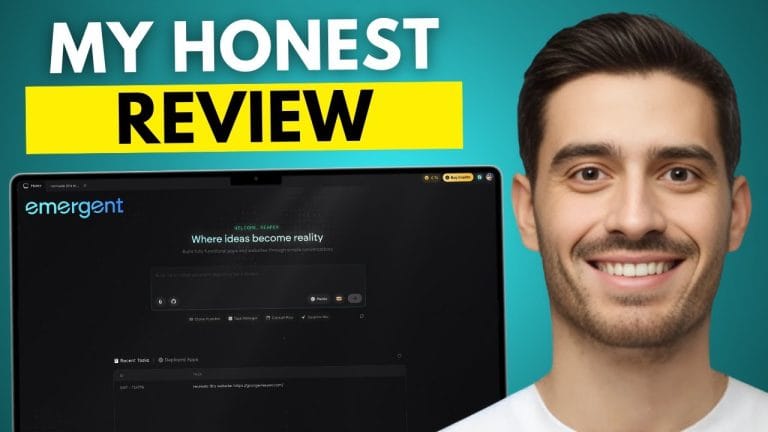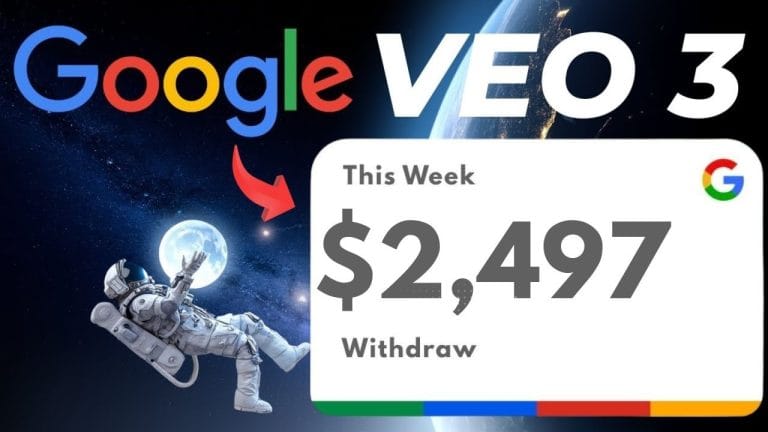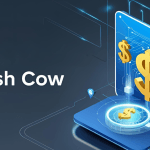 Guide to Affiliate Marketing
Guide to Affiliate MarketingHonest Starts: A Beginner’s Everyday Guide to Affiliate Marketing in 2025
https://youtu.be/mOWXI6VKGpgWelcome to this guide, where we explore everything you need to know about affiliate marketing.
There are days when a bookstore receipt falls out of an old novel, and suddenly, I remember the first dollar I earned online. Not by some magic scheme, but by sharing a book I genuinely loved – and realizing, “Wait, I could get paid for this?” If you think affiliate marketing is just for big-shot marketers or tech whizzes, consider this your informal invitation to the club. Let’s talk about stumbling through your first affiliate link, sending awkward emails to friends, and why keeping things real is your biggest superpower in 2025.
Affiliate Marketing Steps: From Skeptic to Side Hustler (and a Few Stumbles)
Most beginners stumble right out of the gate with affiliate marketing because they believe they need a polished website before taking their first step. This misconception stops countless people from ever starting their affiliate marketing journey. The reality? Research shows that affiliate marketing is approachable for complete beginners—most programs are free to join, and even social media can count as your ‘site’.
Why Nearly All Beginners Think You Need a Website (Spoiler: You Probably Don’t)
The biggest myth in affiliate marketing for beginners is the website requirement. While scrolling through endless tutorials, newcomers see elaborate WordPress sites and assume that’s the entry ticket. But here’s what actually happens when you dig into the affiliate marketing steps: even a personal Facebook profile counts as a ‘website’ for registration purposes.
Amazon Associates, for instance, accepts social media profiles during their application process. Your YouTube channel, Instagram account, or even that dormant blog from 2019 can serve as your starting platform. The key isn’t perfection—it’s taking action.
Demo: Joining Amazon Associates and ClickBank With Just Social Profiles
How to start affiliate marketing becomes much clearer when you see the actual process. Let’s walk through joining two major networks without any fancy website setup.
Amazon Associates Program Setup
The Amazon Associates Program offers up to 10% advertising fee per sale, making it an attractive starting point. The signup process is surprisingly straightforward:
- Navigate to Amazon’s affiliate section
- Create your associate account using your existing Amazon login
- List your social media profiles or basic website
- Wait for approval (usually within 24-48 hours)
Amazon’s accessibility makes it perfect for testing the waters. You’re not committing to anything massive—just dipping your toes into the affiliate marketing world.
ClickBank Affiliate Network Entry
ClickBank operates differently but equally welcomes beginners. With over 4,500 products in its marketplace and operational since around 2004 from Boise, Idaho, it’s a proven platform. Studies indicate that ClickBank offers thousands of high-commission products, making it attractive for beginners seeking better earning potential than traditional retail affiliates.
The registration process mirrors Amazon’s simplicity—create an account, browse their marketplace, and start promoting products that resonate with you. No website required, just enthusiasm and a willingness to learn.
First-Time Flubs: Celebrate Starting Anyway
Every affiliate marketer has embarrassing early stories. Maybe you mistyped your affiliate link in your first Facebook post, sending traffic nowhere. Perhaps you recommended the wrong book version and confused your audience. These stumbles aren’t failures—they’re learning experiences disguised as comedy.
The beauty of affiliate marketing steps lies in their forgiving nature. Unlike traditional business models requiring substantial upfront investment, affiliate marketing lets you fail cheaply and learn quickly. That mistyped link? Copy-paste correctly next time. Wrong product recommendation? Your audience appreciates the follow-up correction more than perfection.
“You’re not going to become a millionaire recommending books to people unless you’re making more than 10%.”
This honest perspective cuts through the hype surrounding affiliate marketing. It’s not about overnight riches—it’s about building sustainable income through consistent, authentic recommendations.
The Real Affiliate Marketing Process
The fundamental steps remain simple regardless of your starting point:
- Join an affiliate network (Amazon, ClickBank, or others)
- Pick a specific product that resonates with you
- Grab your unique affiliate link
- Post it somewhere people can see it
This straightforwardness is both affiliate marketing’s strength and its challenge.
Making Your First Recommendation: It’s More Awkward (and Powerful) Than You’d Guess
Most beginners in affiliate marketing for beginners make the same mistake: they blast affiliate links across every social media platform hoping something will stick. But here’s what research shows – personal connections and authentic dialogue outperform paid advertising or spammy approaches, especially for new affiliates. Friends trust friends, not ads.
Why Broadcasting Doesn’t Work (But Personal Touch Does)
When you’re learning how to drive traffic to affiliate links, it’s tempting to post your link everywhere. Facebook feed, Instagram stories, Twitter – the whole nine yards. The problem? People scroll past promotional content faster than you can say “commission.”
Think about your own behavior. When a friend texts you about a book they genuinely loved, you pay attention. When that same friend posts a generic “Check out this amazing product!” on their Facebook wall, you probably keep scrolling. That’s the difference between personal recommendations and advertising noise.
The Sci-Fi Book Story: How Being Real Beats Being Salesy
Here’s a perfect example of personal recommendations affiliate marketing in action. Imagine you’re reading an incredible sci-fi book – something that genuinely excites you. You remember your friend Carlos mentioned wanting book recommendations months ago.
Instead of crafting some polished marketing message, you create affiliate links for the book and send Carlos a simple email:
“Hey Carlos, I remember you asked me for a sci-fi book recommendation. I’m reading a really good one right now – I absolutely love it. Check it out [your affiliate link]”
That’s it. No fancy copywriting. No aggressive sales pitch. Just how you’d normally communicate with a friend. And here’s the kicker – this approach often works better than elaborate campaigns because it feels authentic.
Your Communication Channels Are Your Marketing Channels
For email marketing for affiliates, you don’t need a massive subscriber list to start. You already communicate digitally every day. Text messages, emails, Instagram DMs, Facebook comments, even YouTube comment sections – these are all valid methods for sharing your affiliate links.
The key insight? A sincere, relevant message sent directly to a friend with actual interest is affiliate marketing’s secret weapon. One thoughtful email can outperform dozens of generic posts because it meets people where they are, not where you want them to be.
The Numbers That Matter
Let’s get practical. Say you’re promoting a $20 book with a 10% commission rate – that’s $2 in your pocket if someone buys through your link. Not life-changing money, but it’s a start. More importantly, it’s proof that the system works.
What makes this approach powerful isn’t the individual commission amounts. It’s the relationship-building aspect. When you make genuine recommendations that help people, they remember. They trust your future suggestions more. They might even ask for recommendations.
Starting With What Feels Natural
The beauty of this approach is that you can start immediately. You don’t need a website, a blog, or thousands of followers. You need genuine enthusiasm for something you’re already using or enjoying, and friends who might benefit from knowing about it.
People respond to genuine, casual recommendations because authenticity trumps professional copywriting, especially early on. Your awkward, honest excitement about a product often converts better than polished sales copy because it feels real.
Research indicates that personal touch beats advertising feel every time. Keep your messages true to how you’d normally chat with friends. Don’t suddenly become a walking advertisement just because you have an affiliate link.
The most successful affiliates understand this fundamental truth: they’re not selling products, they’re sharing discoveries. When you shift from “How can I get people to buy this?” to “Who do I know that would genuinely benefit from this?” everything changes.
Your first recommendation will feel awkward. That’s normal. But it’s also powerful because that awkwardness often translates to authenticity – and authenticity is what converts casual clicks into
Turning Everyday Sharing Into a Strategy: No Ads, Just Authenticity
The biggest mistake new affiliate marketers make isn’t choosing the wrong products or targeting the wrong audience. It’s trying to sound professional when they should be sounding like themselves. Research shows that using existing social and digital platforms for genuine communication drives more early sales than paid ads or ‘professional’ marketing efforts. The secret isn’t in perfection—it’s in authenticity.
Why Your Imperfect Voice Is Your Biggest Asset
When beginners start their affiliate marketing strategy, they often assume they need to write like Madison Avenue copywriters. This couldn’t be further from the truth. “If you’re writing something that looks like an ad—nobody’s going to buy, ever,” and this principle forms the foundation of successful authentic communication affiliate marketing.
Consider how you actually recommend things to friends. You don’t create bullet points about product features. Instead, you might text: “Just finished this amazing sci-fi book—mindgasms every day so far, check it out. Neil Stevenson is a genius.” Notice the casual tone, the intentional misspelling, the personal excitement. That’s not sloppy writing; that’s trust-building communication.
The Art of Not Looking Like Marketing
The most effective approach to social media affiliate marketing involves embracing casual language, inside jokes, and yes—even typos. These elements actually build trust because they signal genuine human communication rather than corporate messaging. Failure to sound authentic is the number one reason new affiliates struggle, making imperfection an unexpected asset.
Facebook, Instagram, and YouTube comments serve as valid starting channels for affiliate sharing, where your real-life voice becomes your secret advantage. Millions of affiliate marketers leverage free traffic for their first sales every year, particularly during the 2024-2025 period where authentic content consistently outperforms polished advertisements.
A Creative Exercise That Changes Everything
Here’s a practical exercise that transforms how beginners approach their content: Write the absolute worst advertisement possible for your affiliate offer. Make it sound corporate, pushy, and sales-heavy. Then completely rewrite it as if you’re texting your best friend about something you genuinely love.
The contrast reveals why free methods drive traffic more effectively than expensive advertising campaigns. Personal recommendations carry weight that no amount of professional copywriting can replicate. Social platforms become fertile ground for affiliate links when approached with this mindset.
Why Beginners Should Skip Paid Ads Initially
During the first 30 days of affiliate marketing, paid advertising often wastes money rather than generates sales. Beginners see more success with free, authentic outreach until they discover what works for their specific niche. The learning curve for effective paid advertising is steep, and mistakes become expensive quickly.
Instead, focus on methods to drive traffic to affiliate links through existing networks and platforms. Don’t worry about slick graphics or professional copywriting—natural, personal posts consistently outperform polished marketing materials in early affiliate marketing efforts.
Your Network Is Your Starting Point
The transcript strongly advocates for leveraging immediate networks and speaking in regular voices, highlighting the power of personal communication over expensive advertising for beginners. This approach requires no budget, no special skills, and no technical knowledge—just the willingness to share genuinely.
Research indicates that personal recommendations and authentic communication serve as effective strategies in affiliate marketing, particularly for those just starting their journey. The multibillion-dollar affiliate marketing industry continues growing precisely because it relies on human connections and trust-based recommendations.
Building Momentum Through Authenticity
Starting affiliate marketing as a side hustle becomes manageable when the focus shifts from creating perfect content to sharing authentic experiences. Consistent effort with genuine communication outperforms sporadic attempts at professional-looking content.
The beauty of this approach lies in its sustainability. Unlike paid advertising campaigns that require constant funding, authentic sharing builds momentum organically. Each genuine recommendation strengthens your credibility and expands your influence within your network.
Remember, successful affiliate marketing isn’t about becoming someone else—it’s about being the most authentic version of yourself while sharing products you
TL;DR: Affiliate marketing for beginners in 2025 boils down to choosing a network (think Amazon or ClickBank), picking a product that sparks your genuine interest, getting your unique link, and recommending it to friends or followers with real, honest voice—no slick ads required. Anyone can start, mistakes included!
















